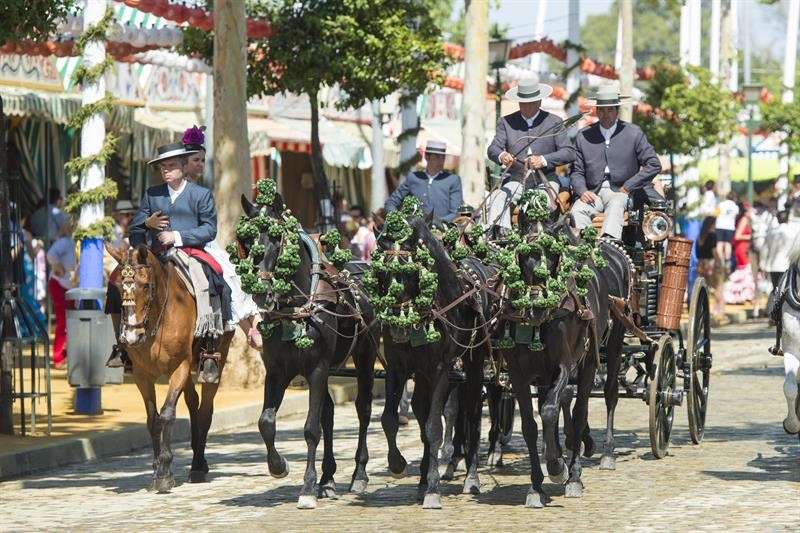The Spanish ferias are legendary, Saskia Mier takes a look at their carriage driving traditions.
As spring washes in warm days and long evenings, the aromatic fragrance of orange blossom wafts through the streets of Andalusia’s capital, awakening the excitement, for this marks the countdown to Seville’s, Feria de Abril.
A microcosm where the idiosyncrasy of the city unfolds with all its charm and power of seduction, the annual Feriais celebrated two weeks after Easter, although depending on the dates this can sometimes mean it is celebrated in May, rather than in April, as its name suggests.
A nineteenth century trade fair
The first Feria was celebrated in 1847 with nineteen marquees, set up as a livestock and agricultural fair. By 1850, the ever growing number of visitors led to an increasing number of marquees, particularly those selling food and drink. Almost a decade later, the fair consisted of 119 marquees, few of which were used for livestock trade. By the twentieth century, the Feria de Abrilwas ‘the social event’ of the year.
The charm of the Feria is the presence of beautifully turned out carriages parading the fairground, carrying women and children dressed in colourful flamenco dresses with layered ruffles tumbling down from their skirts and flowers in their hair. Commonly the carriages are driven by men dressed in traditional traje corto, handsomely poised with the reins between their fingers, driving powerful Andalucian horses, idyllically matched in colour and build. Originally, it was the aristocracy which would travel in carriages from the bullfights to the fairground, a custom that still remains to this day although not just for the high society.
The full article is in the June issue of Carriage Driving magazine - call our Subscriptions Team to purchase a copy on: 01722 716997
